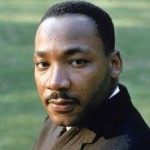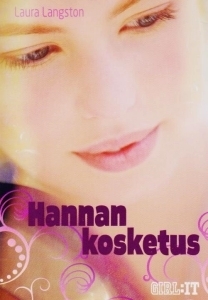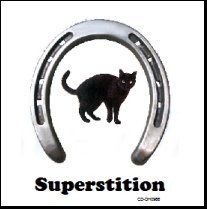Laura Langston's Blog, page 47
February 13, 2013
Chocolate School Ruined Me . . .
 Well, almost. It turned me into a chocolate snob, plus I’ll never look at those heart-shaped chocolate boxes the same way again.
Well, almost. It turned me into a chocolate snob, plus I’ll never look at those heart-shaped chocolate boxes the same way again.
I spent eight hours in chocolate school last month. Chocolate isn’t a huge passion of mine, though I love a good, dark bar (and I can make one last a week if I hide it from Teen Freud and Mr. Petrol Head).
I went for story research. And also because the instructor promised to spill secrets about the industry, turn my understanding of chocolate on its ear and give us samples of fancy imported chocolate that you can’t find outside of Europe. Besides Mr. P went too and we had dinner first. So it was kind of like a date night with benefits. Research benefits.
I knew I was in trouble when the instructor started talking about his own personal chocolate cellar. Yes, he has one; he keeps his special chocolate there. While it ages. For years. (I have no patience for that. My aging limit is three months – plenty of time to let a manuscript rest between revisions or grow a decent tomato).
Things got worse when we were told we were eating chocolate wrong. Apparently you’re not supposed to stuff it in your mouth before your Sheltie grabs it from your hand. You’re supposed to break it off, piece by small piece, letting it gently dissolve between your tongue and front teeth. This should take at least five minutes. Only then can you appreciate the nuances of flavor.
And there are flavors. Plain chocolate can be flowery, fruity, spicy, nutty or a pile of other things. It can also have nuances of leather, hay, coffee, toast or wood. Mushrooms even. Who knew?
I knew about the problem of child and slave labor within much of the cacao industry, and that was troubling to hear again, but I didn’t know how hard it is to grow cacao trees or the intricacies of chocolate production. Nor had I heard the story behind those pretty, heart-shaped Valentine boxes. They were scandalous when Richard Cadbury introduced them back in 1869. The shape mimicked a plant known for birth control properties and the drawing was used as a signal from a man to a woman: get some; you’ll need it.
I learned plenty in chocolate school. I learned how the phrase ‘money grows on trees’ was inspired by chocolate. I learned that cacao is the second largest world cash crop after wheat. I learned that chocolate still tastes good when you eat it fast. That mushrooms work better in sauce than as chocolate nuance. That I’ll never have a chocolate cellar.
Mostly I learned that when Mr. P. buys me a sweet red heart-shaped box of Valentine’s chocolates I should smile and not let the kids know what it really means. But I doubt that’ll be a problem. Since the class, I’ve developed a  taste for Amedei Porcelana, a delicious Italian chocolate that retails for about $100 a pound.
taste for Amedei Porcelana, a delicious Italian chocolate that retails for about $100 a pound.
It looks like it’ll be an expensive Valentine’s Day at our house.
February 5, 2013
Truth Lies in Fiction . . .
 I started my professional life as a journalist, and I loved it. It was challenging and stimulating. I met some cool (and not so cool) people. But from the very beginning, fiction had my heart. I was never content with the ‘who, what and where’ of the reporting world though I never deviated from its rules. I used to think that facts didn’t always tell the real story. I still believe that.
I started my professional life as a journalist, and I loved it. It was challenging and stimulating. I met some cool (and not so cool) people. But from the very beginning, fiction had my heart. I was never content with the ‘who, what and where’ of the reporting world though I never deviated from its rules. I used to think that facts didn’t always tell the real story. I still believe that.
Fiction is capable of telling hidden truths, loving truths, painful truths – the truths that make up our lives. The truths that haunt us or inform us, the ones that make us who we are and sometimes make us who we wish we weren’t.
Recently a plane crashed at the South Pole. Three Canadian men were on board. A helicopter was able to land near the crash site and a search team retrieved the cockpit voice recorder from the back of the plane. Sadly, the front of the plane was buried in snow, ice and rock. That means the bodies of the three men will stay there for months until weather allows for an easier retrieval. The news has provided details about the plane (a de Havilland), the company that owned it (Calgary based) and conditions and life at the South Pole (fascinating). The names of the three men have been mentioned too; there was a shot on the news of a ceremony held in their honor near the crash site.
Those are the facts. But the story – a multi-layered story of larger-than-life characters, of love and loss and horrendous grief that will shadow people for years – was missing.
The news can’t tell the story of the conversation between veteran polar pilot Bob Heath and his wife, Lucy, where he promised her that, after nearly a dozen trips to the Antarctic, this would be his last. Or the sweet details of 25-year-old Mike Denton’s wedding to Carlyn this past September. Or how Perry Anderson was a Rush fan and how he’d crack friends up with his play-by-play of Aussie dart matches.
The news isn’t about personalities, or emotions, or relationships. It doesn’t trade in small details. Not really. But fiction does. Fiction is about the stuff of life . . . stuff that rarely makes the news. It portrays real life in a way that news can’t. And that’s why I write it. I remain a news junkie; I follow it closely – too closely sometimes. But fiction still has my heart.
For those who want to read about the details and personal lives of the three men lost in the Antarctic crash:http://www.borekair.com/memorial/
January 22, 2013
Yes, Martin Luther King Jr. Would Tweet
I don’t remember Martin Luther King Jr. very well. I vaguely recall him speaking on TV and I clearly remember the collective sadness when he was assassinated, though some of that was  undoubtedly influenced by the assassination of Robert Kennedy two months later. (In my child mind the spring of 1968 was all about public weeping).
undoubtedly influenced by the assassination of Robert Kennedy two months later. (In my child mind the spring of 1968 was all about public weeping).
While the man wasn’t part of my little girl world, his beliefs and words were. And since January 21st was Martin Luther King Jr. day, I thought I’d share a few MLK quotes that resonate with me as a writer.
“Faith is taking the first step even when you don’t see the whole staircase.” It applies to so much in life but it sure applies to a life in the arts. Writing that first line, dabbing that first swirl of paint, picking up that lump of clay requires a tremendous leap of faith.
“Whatever your life’s work is, do it well. A man should do his job so well that the living, the dead, and the unborn could do it no better.” This quote reminds me of my neighbor who passed away unexpectedly last year. Ron was a mechanic, one of the best in the city. Retirement didn’t stop him either. On days when my words wouldn’t flow, I’d look out my window and see Ron in his driveway tinkering with a wrench and being the best he could be under the hood of a car. Humbled and inspired, I’d go back to the keyboard to do whatever best I could muster in that particular moment.
“Life’s most persistent and urgent question is, ‘What are you doing for others?’” Much of what I do for others is private and not something I care to share (I don’t get why some are public about their good deeds). But one thing I do for others publicly is write. I write so people will be moved or informed or entertained. (And sometimes I write so Teen Freud will remember to empty the dishwasher or companies like Dearfoams will replace the two-month-old slippers that are already falling apart). I also write to get paid; it’s how I make my living. I like to believe there’s honor in that (see middle quote). But sometimes I spend too much time in the ‘how am I doing?’ loop and forget that this whole thing isn’t about me at all – it’s about the readers.
Which brings me to the last MLK quote: “We must use time
creatively.” I’ll bet you money that if Martin Luther King were alive today he’d be on Twitter. And probably Facebook. For sure he’d have a website. He was a smart guy; he’d recognize the power of social media. But I doubt he’d spend hours tracking his progress or checking his likes or counting his retweets. He’d be too busy doing for others, doing it well, and having faith.
Don’t you think?
January 7, 2013
A New Year . . . a New Website . . .
 So long 2012, cue 2013. Yes, there were some memorable moments over the last year: my son graduating from high school and starting university; visiting with family and friends; evenings at the beach with the dogs; books written and revised; a prodigious garden. Mostly, though, it was a mixed bag kind of year. You know the kind – a few too many challenges and too much time spent dealing with them.
So long 2012, cue 2013. Yes, there were some memorable moments over the last year: my son graduating from high school and starting university; visiting with family and friends; evenings at the beach with the dogs; books written and revised; a prodigious garden. Mostly, though, it was a mixed bag kind of year. You know the kind – a few too many challenges and too much time spent dealing with them.
Shortly before he graduated, my son came home from school with a raffle ticket. Must be present to win it said on the back. “Good luck with that,” he said with a laugh. I questioned his cynicism. More than half his friends don’t sit down for dinner with their family at night, he told me, adding that he couldn’t see how they’d rope their parents into going to the school fair to win a possible gift basket. “For sure they’ll text them a reminder, but I doubt that’ll make a difference.”
That started me thinking about how present I am in my own life. I always show up (to the dinner table for sure) but often my body is in the chair while my mind is back in the scene I need to finish. Or on the new website I want to get up. Or thinking about tomorrow’s looming issue instead of enjoying the meal and the company.
So as I turn the page on a new year (and kick off my new website; thank you Miles!), I’m not making any resolutions. Instead I’m picking a personal theme: to be present. Good, bad, challenges or celebrations: this year I’m going to show up and be in the moment. The scenes that are in my head or back on the computer will wait. The scene that’s in front of me – the person, the pet, the peach I’m picking from the tree – is all that matters.
David Bader said it best: “Be here now. Be someplace else later. Is that so complicated?”
Great words to kick off what I hope will be a great 2013!
December 22, 2012
The Greatest Gifts of All
 As the holiday season approaches, I’d like to wish everybody a Merry Christmas. It’ll be a little quieter than usual at our house this year but we’ll all be together, and in light of the recent shooting in Newtown, Connecticut I’m aware of just how special that is. It reminds me to appreciate those I love and relish in the simple things in life. It’s a reminder, too, that the best gifts in life are rarely things.
As the holiday season approaches, I’d like to wish everybody a Merry Christmas. It’ll be a little quieter than usual at our house this year but we’ll all be together, and in light of the recent shooting in Newtown, Connecticut I’m aware of just how special that is. It reminds me to appreciate those I love and relish in the simple things in life. It’s a reminder, too, that the best gifts in life are rarely things.
The best writing gift I ever received came at a time of high emotion. I was thirty, an established broadcast journalist, but just beginning my writing career. I’d had a few articles published, but no books, despite my efforts. My grandmother was in the hospital. When I went to see her, she introduced me to the nurse as ‘my granddaughter who writes books.’ My grandmother died three days later. I consider that her last and possibly most important gift to me. The belief she had in my abilities (sometimes more than I had in myself) and her utter conviction that it was only a matter of time before I was published in book length fiction gave me the courage and push I needed to keep going. I dedicated my first book to her.
As the year draws to a close and we welcome 2013 may you be blessed with love, laughter and the presence of the people you hold dear. And may we all be blessed with the greatest gift of all: peace.
November 14, 2012
Love Those Foreign Editions
 Take a look at the Finnish cover for Hannah’s Touch. Isn’t it gorgeous? The Swedish and Norwegian versions are similar. It’s a bit like Christmas when the foreign editions show up in the mail – I never know what I’ll find when I unwrap them. It’s also a true thrill to realize that people around the world are reading my books. I’m so grateful to do what I do!
Take a look at the Finnish cover for Hannah’s Touch. Isn’t it gorgeous? The Swedish and Norwegian versions are similar. It’s a bit like Christmas when the foreign editions show up in the mail – I never know what I’ll find when I unwrap them. It’s also a true thrill to realize that people around the world are reading my books. I’m so grateful to do what I do!
October 27, 2012
Get a Ritual and Get Writing
 This is the season of pumpkins, black cats, and superstitions. Maybe that’s why I’m thinking about writers and their rituals, superstitious or otherwise. We don’t all have rituals, but many of us do. And we’re in good company.
This is the season of pumpkins, black cats, and superstitions. Maybe that’s why I’m thinking about writers and their rituals, superstitious or otherwise. We don’t all have rituals, but many of us do. And we’re in good company.
Apparently Charles Dickens had to arrange the ornaments on his desk in a certain way before he started writing. May Sarton cued up the 18th century music. Maya Angelou has used the same writing ritual for years: she gets up about five, drives to a hotel and is writing by 6:30 in the morning. Longhand. On yellow pads. Lying on the bed. Oh, and she asks staff to take everything off the walls so there’s just her, the Bible, Roget’s Thesaurus and some sherry. Isabelle Allende begins writing every new book on January 8th, a tradition that began in 1981 with a letter she wrote to her dying grandfather, one that sparked The House of Spirits.
Many writing rituals are more mundane. One author friend writes her first draft in long hand using a particular type of pen (she orders them in bulk). Another can’t write with shoes on her feet, only slippers. My ritual is an early morning work out, a quick check of email while I drink my first cup of coffee, and a glance at my ‘to do’ list. Then I’m ready to write. Oh, wait. I need a red pen handy (to cross items off said list) and a sweater hanging on the back of my chair to pull around my shoulders when a chill (or insecurity) hits. The latter ritual goes back years to a hand knit navy sweater given to me by my Aunt Edna. Having that sweater close was a reminder that someone had my back. It was a good feeling.
You might think I’m fussy or just plain weird, but there’s nothing weird or merely superstitious about rituals. Thanks to neuroscience, we now know rituals can increase confidence, reduce worry and make it easier to get things done.
Here’s how it works. When we repeat behaviors, the neurons in our brains communicate together, wire together, and activate each other. If we do things fairly often in a similar sequence, our brains get used to that order and become more efficient at the task.
“It’s like developing friendships,” says Dr. Brian Christie, Director of the Neuroscience Graduate Program at the University of Victoria in British Columbia. “At first, conversation is awkward and stilted but as you become more comfortable and closer better friends, those conversations flow more easily. It’s the same with neurons. The neurons that fire together, wire together.”
So if the neurons for writing are activated at the same time you follow a specific routine – whether that’s pouring your first coffee of the day, pulling on a familiar sweater, or rearranging the chotchkies on your desk like Dickens did – that means they’re primed and ready to go. And the more regularly they fire together, the bigger, stronger, and more powerful they become.
And I don’t know about you, but I can use all the help I can get.
So excuse me. I need to check my email, glance at my ‘to do’ list, and get to work.



